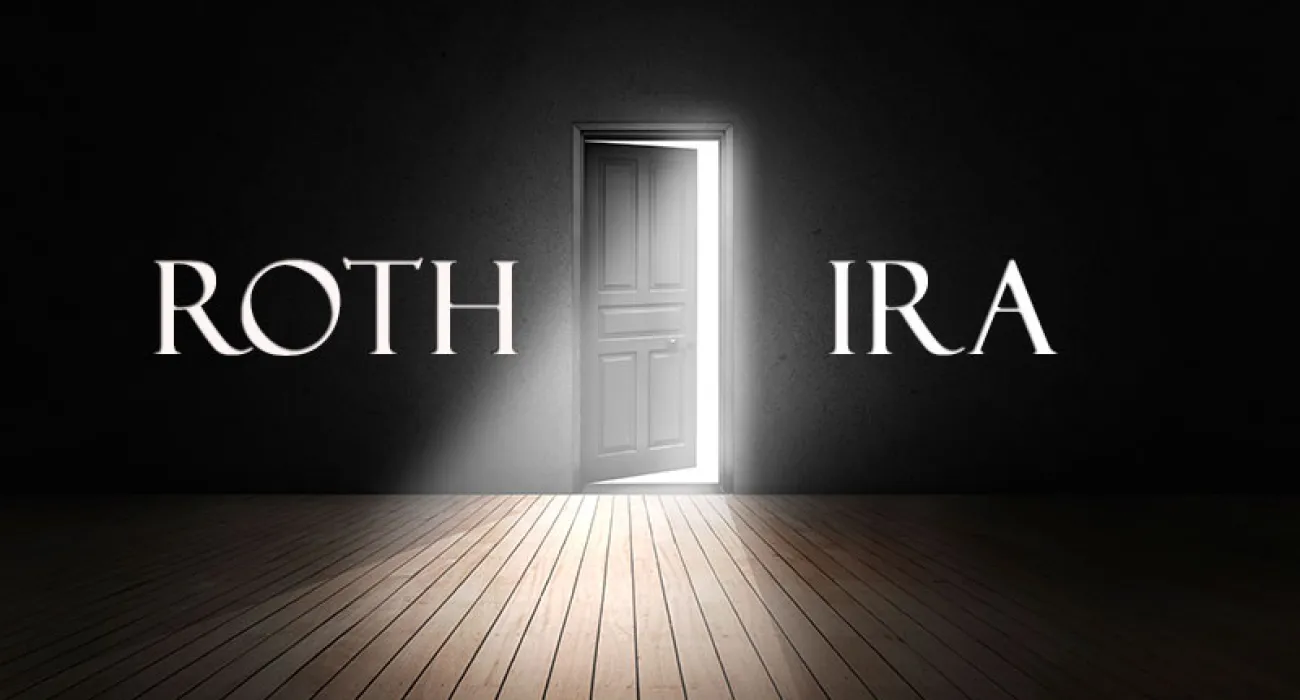There are many individuals and families who make a high income and believe they cannot do a Roth IRA. However, there is a part of your financial house you may not have realized that existed called the "Back Door" Roth IRA. So, why do so many people miss this great opportunity? According to the Investment Company Institute, only 18.6 million U.S. households (about 15.7%) owned Roth IRAs in 2011. Do that few Americans want tax-free income in retirement?
Who can generally contribute to a Roth IRA?
There are three ways to fund a Roth IRA-you can contribute directly, you can convert all or part of a traditional IRA to a Roth IRA, or you can roll funds over from an eligible employer retirement plan. In general, you can contribute up to $5,500 to an IRA (traditional, Roth, or a combination of both) in 2016 ($6,500 if you'll be age 50 or older by December 31). However, your ability to make annual contributions may be limited (or eliminated) depending on your income level ("modified adjusted gross income," or MAGI), as shown in the chart below: (source: www.irs.gov)
Important changes since 2010
Prior to 2010, you couldn't convert a traditional IRA to a Roth IRA (or roll over non-Roth funds from an employer plan to a Roth IRA) if your MAGI exceeded $100,000 or you were married and filed separate federal income tax returns.
The Tax Increase Prevention and Reconciliation Act (TIPRA), however, repealed the $100,000 income limit and marital status restriction, beginning in 2010. What this means is that, regardless of your filing status or how much you earn, you can now convert a traditional IRA to a Roth IRA. (There's one exception-you generally can't convert an inherited IRA to a Roth. Special rules apply to spouse beneficiaries.) And don't forget your SEP IRAs and SIMPLE IRAs. They can also be converted to Roth IRAs (for SIMPLE IRAs, you'll need to participate in the plan for two years before you convert). You'll need to set up a new SEP/SIMPLE IRA to receive any additional plan contributions after you convert.
How do you convert a Traditional IRA to a Roth?
Converting is easy. You simply notify your existing traditional IRA trustee or custodian that you want to convert all or part of your traditional IRA to a Roth IRA, and the custodian/trustee will provide you with the necessary paperwork.
You can also open a new Roth IRA at a different financial institution, and then have the funds in your traditional IRA transferred directly to your new Roth IRA. The trustee/custodian of your new Roth IRA can give you the paperwork that you need to do this. If you prefer, you can instead contact the trustee/custodian of your traditional IRA, have the funds in your traditional IRA distributed to you, and then roll those funds over to your new Roth IRA within 60 days of the distribution. The income tax consequences are the same regardless of the method you choose.
Calculating the conversion tax
When you convert a traditional IRA to a Roth IRA, you're taxed as if you received a distribution, but with one important difference-the 10% early distribution tax doesn't apply, even if you're under age 59½.
However, the IRS may recapture this penalty tax if you make a nonqualified withdrawal from your Roth IRA within five years of your conversion. If you've made only nondeductible (after-tax) contributions to your traditional IRA, then only the earnings, and not your own contributions, will be subject to tax at the time you convert the IRA to a Roth. But if you've made both deductible and nondeductible IRA contributions to your traditional IRA, and you don't plan on converting the entire amount, things can get complicated. That's because under IRS rules, you can't just convert the nondeductible contributions to a Roth and avoid paying tax at conversion. Instead, the amount you convert is deemed to consist of a pro rata portion of the taxable and nontaxable dollars in the IRA.
For example, assume that your traditional IRA contains $350,000 of taxable (deductible) contributions, $50,000 of nontaxable (nondeductible) contributions, and $100,000 of taxable earnings. You can't convert only the $50,000 nondeductible (nontaxable) contributions to a Roth, and have a tax-free conversion. Instead, you'll need to prorate the taxable and nontaxable portions of the account. So in the example above, 90% ($450,000/$500,000) of each distribution from the IRA (including any conversion) will be taxable, and 10% will be nontaxable. You can't escape this result by using separate IRAs. Under IRS rules, you must use the "IRA aggregation rule" under IRC code Section 408(d)(2) which means all of your traditional IRAs (including SEPs and SIMPLEs) are used when you calculate the taxable income resulting from a distribution from (or conversion of) any of the IRAs.
Some experts suggest that you can avoid the pro rata rule and make a tax-free conversion if you take a total distribution from all of your traditional IRAs, transfer the taxable dollars to an employer plan like a 401(k) (assuming the plan accepts rollovers), and then roll over (convert) the remaining balance (i.e., the nontaxable dollars) to a Roth IRA. The IRS has not yet officially ruled on this technique, so be sure to get professional advice before considering this. The final obstacle that you want to be aware of is "The Step Doctrine". This means if you the separate steps of a non-deductible contribution and then a conversion are done too quickly there is a chance the if caught the IRA & Tax Court will view this as a single integrated tax event and disallow it, especially if the individual's income was too high to begin with.
Using conversions to make "annual contributions"
Unfortunately, TIPRA didn't repeal the income limits that may prevent you from making annual contributions to your Roth IRA. But if your income exceeds these limits, and you want to make annual Roth contributions, there's an easy workaround: you can make nondeductible contributions to a traditional IRA, as long as you haven't yet reached age 70½. You simply make your annual contribution first to a traditional IRA, and then convert that traditional IRA to a Roth. There are no limits to the number of Roth conversions you can make. (But again, you'll need to aggregate all of your traditional IRAs-including SEPs and SIMPLEs-when you calculate the taxable portion of the conversion.)
Employer retirement plans
You can also roll over non-Roth funds from an employer plan (like a 401(k)) to a Roth IRA. Prior to 2010, the income limits and marital status restrictions also applied to employer plan rollovers to Roth IRAs (commonly referred to as conversions). As with traditional IRA conversions, TIPRA removed these restrictions beginning in 2010, and now anyone can roll over funds from an employer plan to a Roth IRA, regardless of income level or marital status. Like traditional IRA conversions, the amount you convert will be subject to income tax in the year of conversion (except for any after-tax contributions you've made).
Is a Roth conversion right for you?
The answer to this question depends on many factors, including your current and projected future income tax rates, the length of time you can leave the funds in the Roth IRA without taking withdrawals, your state's tax laws, and how you'll pay the income taxes due at the time of the conversion. And don't forget-if you make a Roth conversion and it turns out not to be advantageous (for example, the value of your investments declines substantially), IRS rules allow you to "undo" the conversion. You generally have until your tax return due date (including extensions) to undo, or "re-characterize," your conversion. For most taxpayers, this means you have until October 15, 2016, to undo a 2015 Roth conversion.
Rollover Considerations
Before rolling assets over from a qualified plan, you should consider various factors. These factors include but are not limited to: Investment Options, an IRA often enables the investor to select from a broader range of investment options; Fees and Expenses, both plans involve investment-related expenses and plan or account fees. IRA fees may be more than your current plan fees; Services, different levels of service may be available under each option; Penalty-Free withdrawals, it may be easier to borrow from a plan and you may be able to withdrawal funds earlier in certain circumstances; Required minimum distributions, if still working at 70 ½ a person is generally not required to make distributions from employer's plan; Tax considerations, for potential tax considerations you should consult with your tax advisor. Other factors may be relevant when analyzing considerations that might apply to your specific circumstances, you should consult your financial professional.
Written by:
Ted Jenkin
Request a FREE No-Obligation Consultation: www.oxygenfinancial.net
Ted Jenkin is a frequent guest columnist for the Wall Street Journal and Headline News Weekend Express. He is the co-CEO of oXYGen Financial. You can follow him on LinkedIn @ www.linkedin.com/in/theceoadvisor or on Twitter @tedjenkin.
If you would like to receive more information on making smart money moves for your future, be sure to contact us today!




